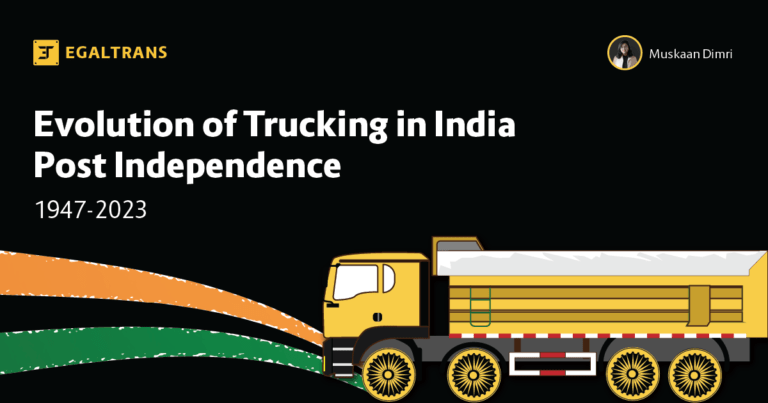The global truck driver shortage is an issue of growing concern, affecting numerous countries and sectors. As economies rely heavily on road transportation for goods, the implications of this shortage are vast and multifaceted. This blog explores the depth of the truck driver shortage across major regions, its worldwide impacts, potential future scenarios, and possible solutions.
Summary of Global Truck Driver Shortage in Major Geographies
As economies grow and the demand for goods transportation increases, the disparity between the supply of qualified drivers and the demand for their services has widened. This shortage is not confined to a single region but spans across major economies, including the United States, the United Kingdom, Europe, and India.
United States
The US is experiencing a significant truck driver shortage, with estimates indicating a need for tens of thousands of new drivers to meet demand. Factors contributing to this include an aging workforce, high turnover rates, and the challenges of long-haul driving lifestyles. The American Trucking Associations (ATA) have highlighted that the shortage could reach over 160,000 drivers by 2030 if current trends continue.
United Kingdom
In the UK, the driver shortage has been exacerbated by Brexit and the COVID-19 pandemic. The departure of many EU nationals who worked as drivers, coupled with delays in driver training and licensing due to lockdowns, has led to a severe shortfall. The Road Haulage Association (RHA) estimates a shortage of around 100,000 drivers.
Europe
Across Europe, the situation mirrors that of the UK and US, with Germany, France, and Poland among the hardest hit. The International Road Transport Union (IRU) has reported a shortage of around 400,000 drivers across the continent. The aging driver population and low appeal of the profession to younger generations are significant factors.
India
India faces its own unique challenges with a shortage of truck drivers. The country’s rapidly growing economy has increased the demand for goods transportation, yet poor working conditions, low pay, and long periods away from home deter many from the profession. Industry estimates suggest a deficit of about 22% of the required driver workforce.

Top 5 Impacts of the Global Truck Driver Shortage
- Supply Chain Disruptions
The shortage of truck drivers is causing significant delays in the transportation of goods, leading to supply chain bottlenecks. This impacts everything from retail inventory to manufacturing inputs, causing delays in production and increased costs.
- Increased Transportation Costs
With fewer drivers available, trucking companies are raising wages to attract new recruits, and these costs are being passed on to consumers. Higher transportation costs lead to increased prices for goods across various sectors.
- Economic Slowdown
The inability to move goods efficiently is slowing down economic activities. Retailers face stock shortages, manufacturers experience delays in receiving raw materials, and exports suffer due to delayed deliveries, collectively impacting GDP growth.
- Pressure on Other Transport Modes
The strain on road transportation is increasing the demand for alternative transport modes like rail and air freight. However, these modes are not equipped to handle the excess load, leading to further logistical challenges and inefficiencies.
- Environmental Impact
The shortage of drivers often results in suboptimal logistics planning, with partially filled trucks making trips or longer idle times. This inefficiency contributes to increased fuel consumption and higher carbon emissions, negatively impacting the environment.
How Trucks Will Operate Without Enough Truck Drivers
In the absence of sufficient truck drivers, the industry is exploring several avenues to maintain operations. Companies are investing heavily in developing autonomous trucks. While fully self-driving trucks are still in the testing phase, semi-autonomous systems that assist drivers are already in use, improving efficiency and safety. GPS tracking, route optimization software, and telematics are helping to maximize the efficiency of existing drivers, reducing downtime and improving load management. Flexible schedules and shorter hauls have been introduced that can make the profession more appealing, helping to attract and retain drivers.
Also Read: Why Truck Driver Shortage is a Hoax: The Real Need for Professional Training
5 Valuable Solutions to Global Truck Driver Shortage
Addressing the truck driver shortage requires a multifaceted approach:
- Improving Working Conditions
Better pay, benefits, and working conditions can make the profession more attractive. Companies need to ensure that drivers have access to amenities and rest areas to improve their quality of life on the road.
- Recruitment and Training Programs
Investing in recruitment campaigns and comprehensive training programs can help bring in new drivers. Partnerships with vocational schools and government incentives can support this effort.
- Policy and Regulatory Support
Governments can play a crucial role by easing regulations around licensing and offering subsidies or tax breaks to companies investing in driver training and retention.
- Promoting the Profession
Changing the perception of truck driving through marketing campaigns that highlight the importance and benefits of the profession can attract younger generations.
- Technological Integration
Embracing technology not only helps in attracting tech-savvy younger workers but also enhances efficiency and safety, making the job less strenuous and more appealing.
In conclusion, the global truck driver shortage is a complex issue with far-reaching impacts. Through a combination of improved working conditions, strategic recruitment, policy support, and technological advancements, the industry can navigate these challenges and ensure the continued smooth operation of global supply chains.






